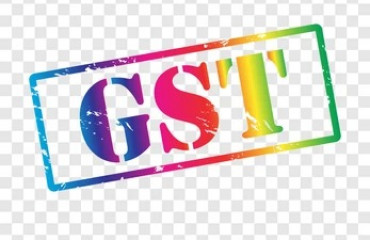
India’s ‘K-shaped’ economy is now so entrenched that news headlines appear to be speaking about two very different countries. Consider two news items. In the first 11 months of last year, imports of luxury watches hit 250 million Swiss francs, up 28% from last year.
India's 'K-shaped' economy is now so entrenched that news headlines appear to be speaking about two very different countries. Consider two news items. In the first 11 months of last year, imports of luxury watches hit 250 million Swiss francs, up 28% from last year.
That article in Mint last week also mentioned a 40-year-old Delhi businessman who spent an initial ₹60 lakh on an obscure Swiss luxury brand timepiece and then customized it for a total cost of ₹1.6 crore.
At the other end of the spectrum, pushing through price hikes for tea, coffee and edible oils has meant that fast-moving consumer product companies are projecting low single-digits growth in earnings per share.
Also Read: A tale of two Indias: Inequality alleviation is a challenge we must tackle head-on
In the middle, even relatively low-priced international clothing brands are seeing declining footfalls and sluggish sales. Reserve Bank of India (RBI) surveys for November show that almost 90% of urban households spent more on essential items than they did a year ago, the highest in almost a decade.
The growth of India's middle-class has been slowing for several years, but anecdotal evidence, low wage growth and sustained food inflation suggest it may be becoming smaller. Car sales show that inventory of subcompacts is piling up at dealerships.
Almost a year ago, Maruti Suzuki chairman R.C. Bhargava underlined that sales of cars priced below ₹10 lakh were struggling while SUVs were motoring along.
He added a corollary that had implications for the entire economy: "Unless the lower end of the market grows, there are going to be no feeders into the upper market." Six years ago, I wrote a piece for Mint suggesting that India's middle class might be shrinking (shorturl.at/DKrdb). I wasn't pessimistic enough.
The pincer of technology at one end and government rule-compliance at the other, with a thicket of regulations to go with a disproportionately high tax burden for small businesses, is upending small exporters and kirana stores.
According to Howindialives.com, kirana stores accounted for just over a third of India's retail and wholesale trade in 2015-16. By 2023-24, this share had fallen to 22% as more urban consumers turned to quick-commerce services.
The other marker of growing inequality is the news that service exports at $35.7 billion surpassed the export of manufactured goods in November. With India's persistently K-shaped economy, even the silver linings come with looming clouds.
The sustained growth of software exports and the rise of global capability centres (GCCs) have made concerns about our current account deficit seem like a thing of the past. By one estimate, GCCs now employ 3 million Indians.
The flip side is that our labour-intensive exports, mostly powered by small and medium enterprises (SMEs), have been struggling, with the recent exception of garments, which are benefitting from the political upheaval in Bangladesh.
Even so, Bangladesh's apparel exports grew in 2024 by 7% to $38 billion, leaving our apparel exporters well behind.
Also Read: Tax overload: India's middle class is hurting because of inequitable taxation
In addition to struggling with a complex goods and services tax (GST) and increased tariffs on intermediate inputs, SME exporters have faced the whiplash of a real effective exchange rate that has become alarmingly overvalued.
RBI has repeatedly intervened to bolster the rupee against the US dollar, while other developing economies have allowed their currencies to slide, thus addressing the strategic depreciation of the Chinese renminbi by Beijing.
Our obsession with a strong rupee, in contrast, has weakened the competitiveness of our exporters. K-shaped disparities in our educational system are also part of the problem.
In an article for The Hindu last year, economist Ashoka Mody quotes Stanford University's Eric Hanushek, an expert on the correlation between education quality and GDP growth who estimated that "only 15% of Indian school students have the basic arithmetic and reading skills required for a global economy; 85% of Chinese children have those skills," as Mody noted.
My last journalistic assignment overseas required regularly interviewing Chinese workers in the tech hub of Shenzhen and the factory capital of Dongguan.
I was surprised by how well-educated Chinese blue-collar workers were and by the complaint of employers that during a labour shortage, Chinese women were migrating to service-sector jobs in large numbers.
In response to the policies of Donald Trump in his first presidential term and their continuation by Joe Biden, Chinese factory owners invested $163 billion in greenfield projects abroad in 2023, according to fDi Intelligence.
This is the real China-plus-one story, hiding in plain sight. It explains why Trump in China is often called a "nation-builder"—for China.
Since returning to India after decades away, I still feel as if I were a foreign correspondent. An already unequal country has become even more skewed.
In Bengaluru, I routinely bump into youngsters working as financial analysts for companies in the US. Car parks are crammed with SUVs, some so large they resemble amphibious James Bond-styled vehicles. Food delivery people, meanwhile, look bedraggled and harassed.
Also Read: Simplify India's GST regime: The case for it is clear and it's time to act
Speaking of glaring inequality, could the next budget please remove GST levies that affect the earnings of gig workers and impose heavy taxes on quick-commerce companies with valuations of several billion dollars?
Consumers and companies alike should help pay for their 'delivery executives' medical and life insurance—and the overflow of plastic in our garbage landfills.
The author is a Mint columnist and a former Financial Times foreign correspondent
